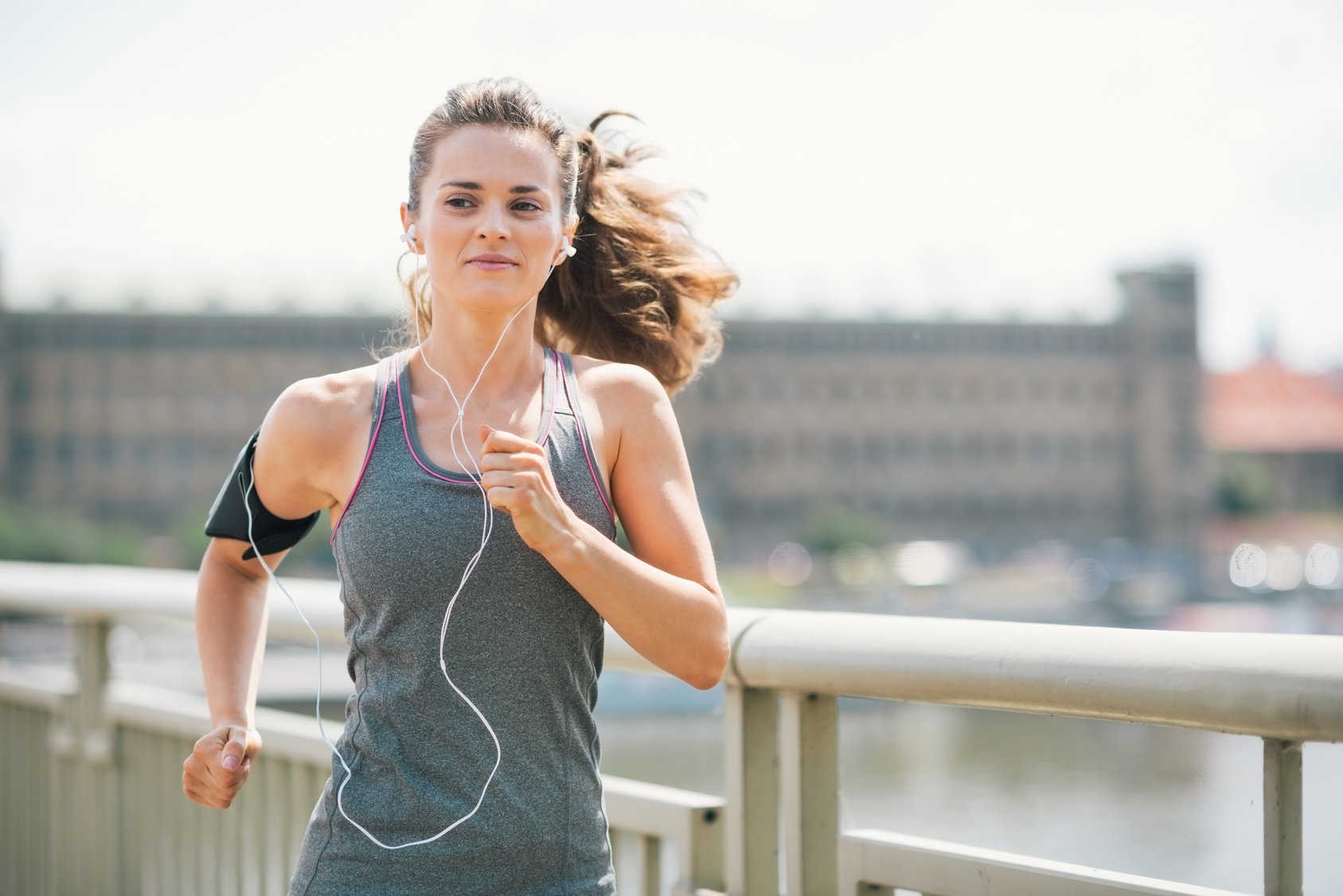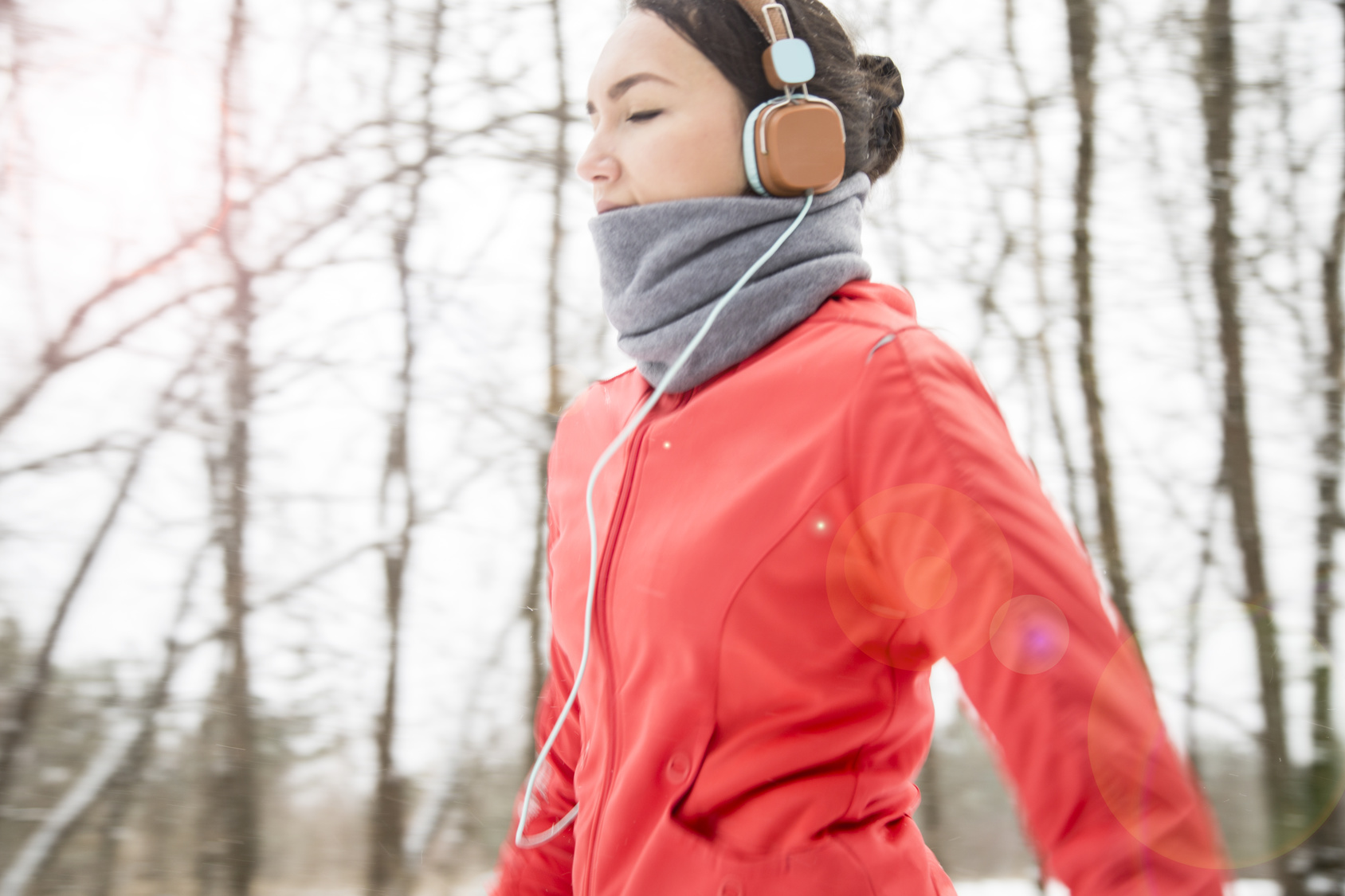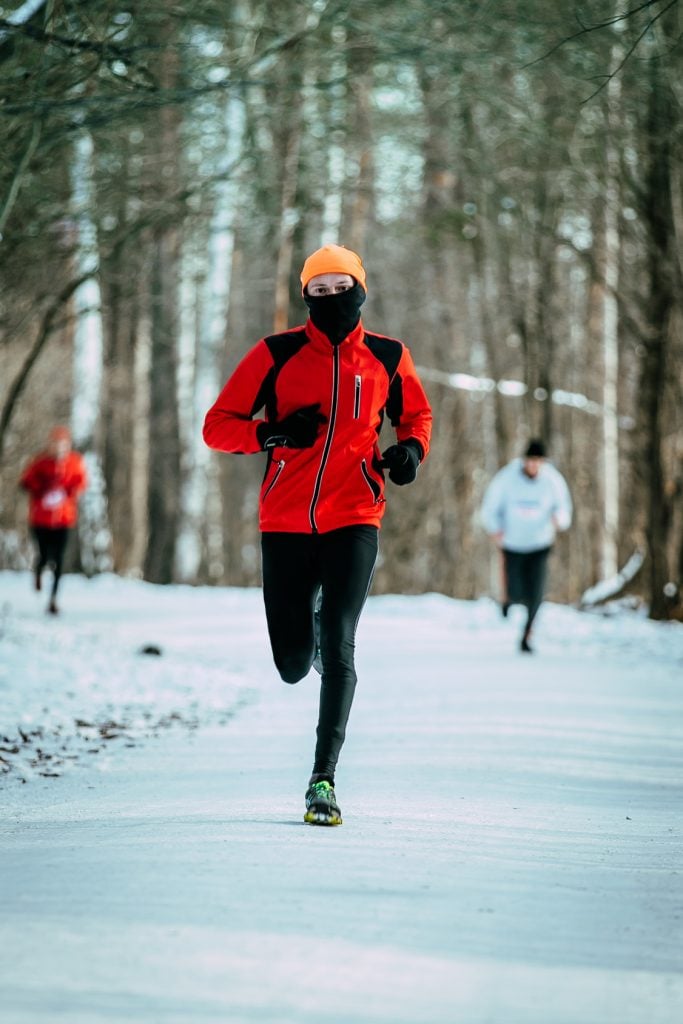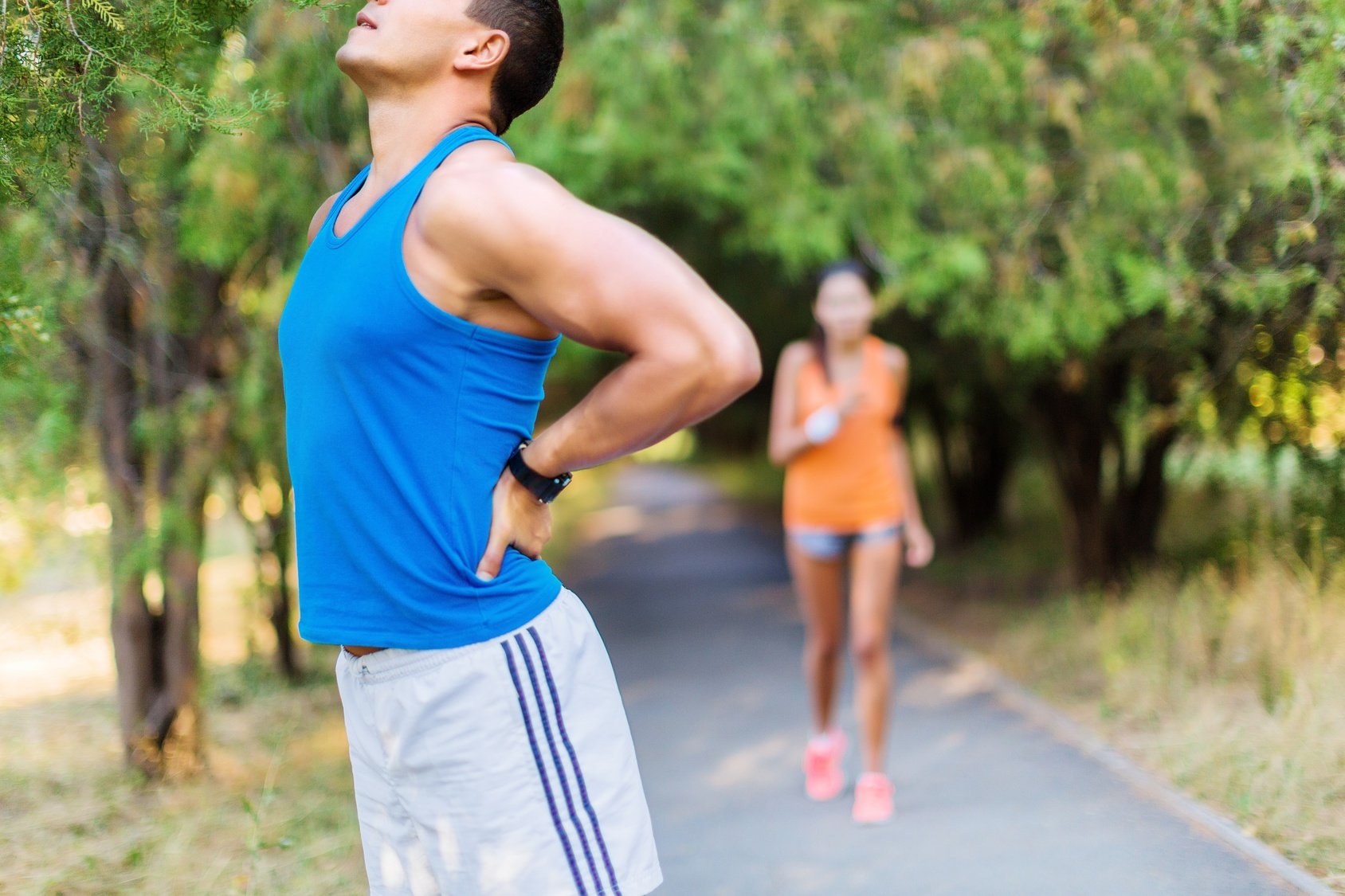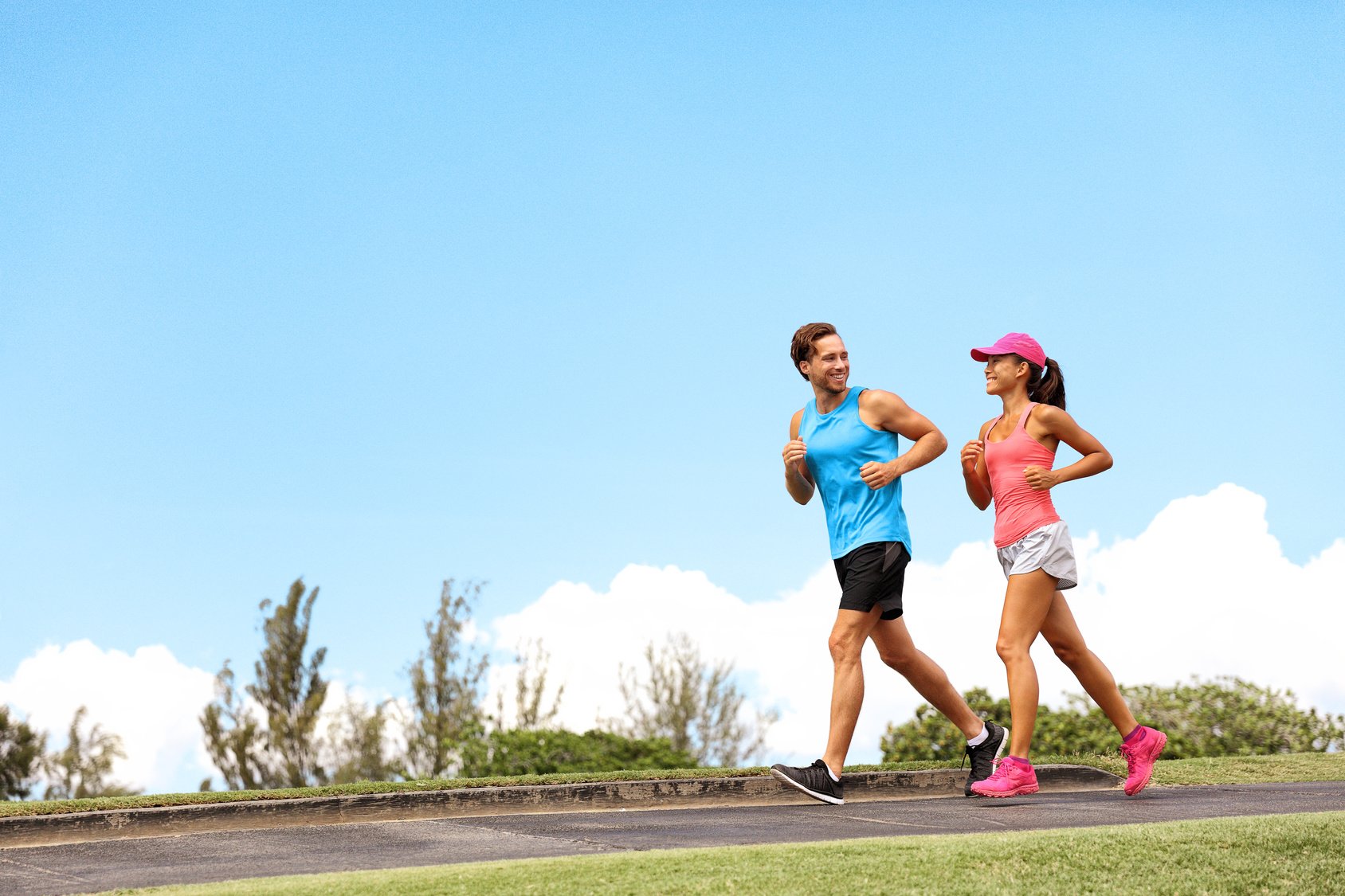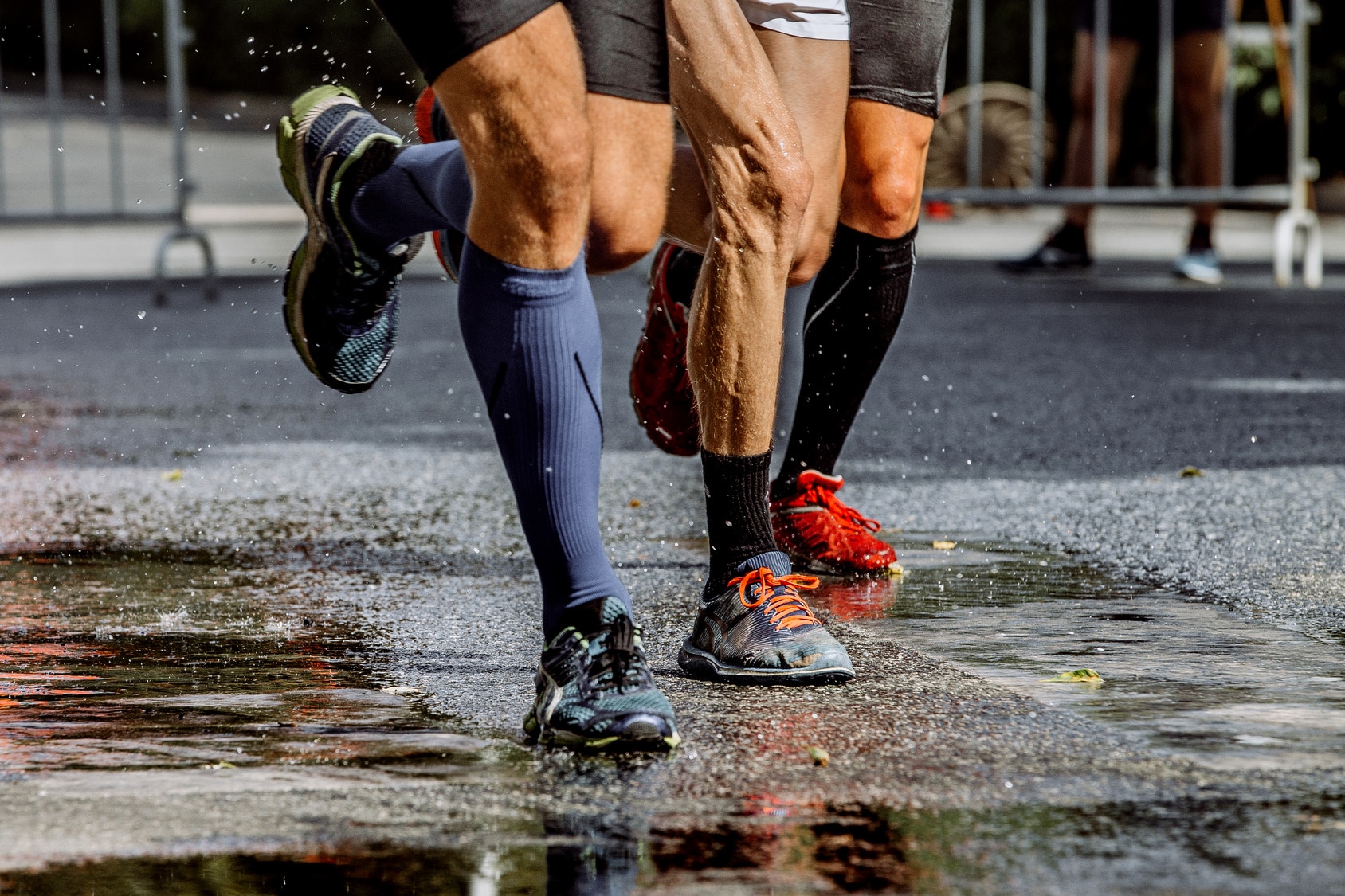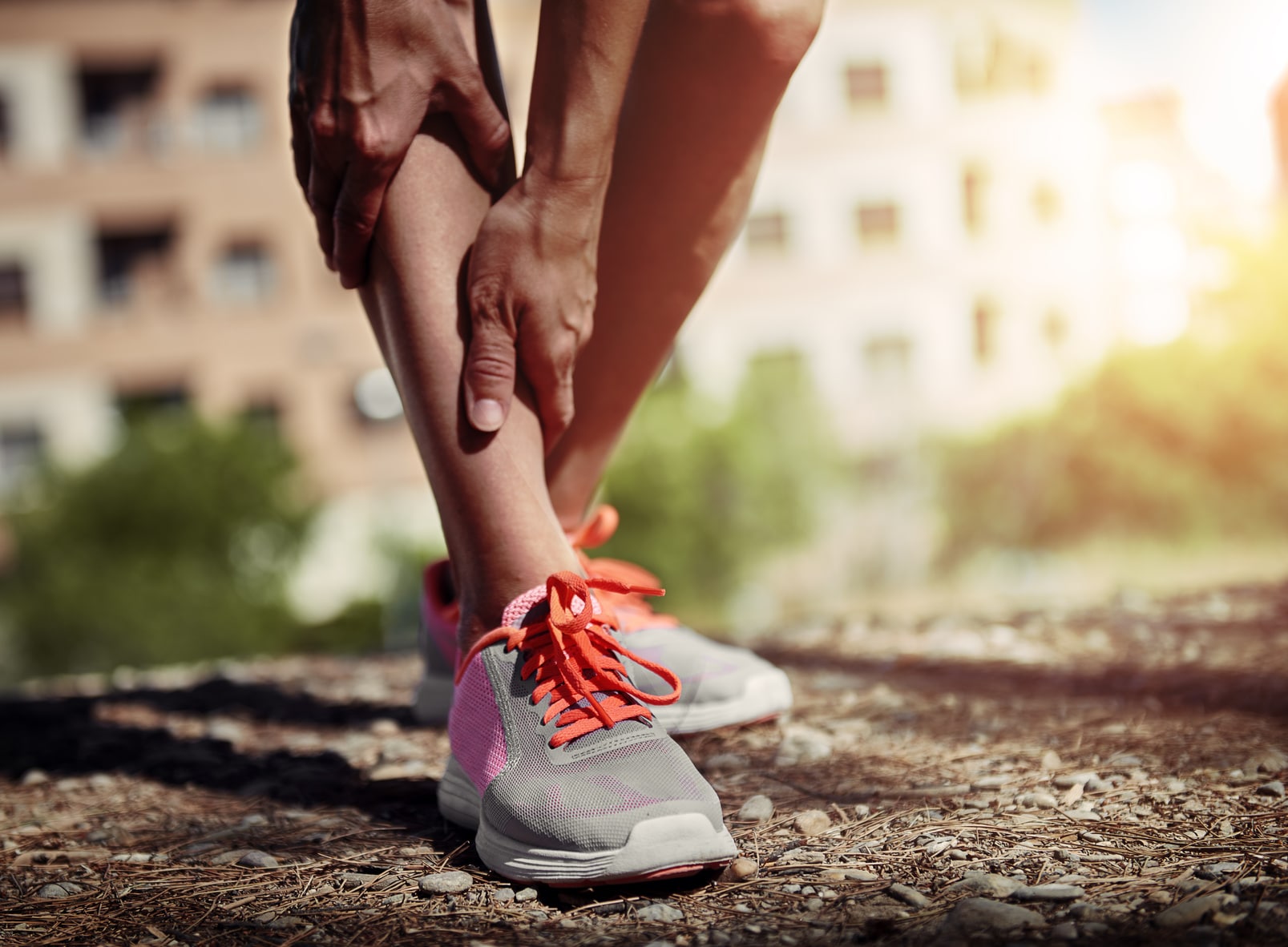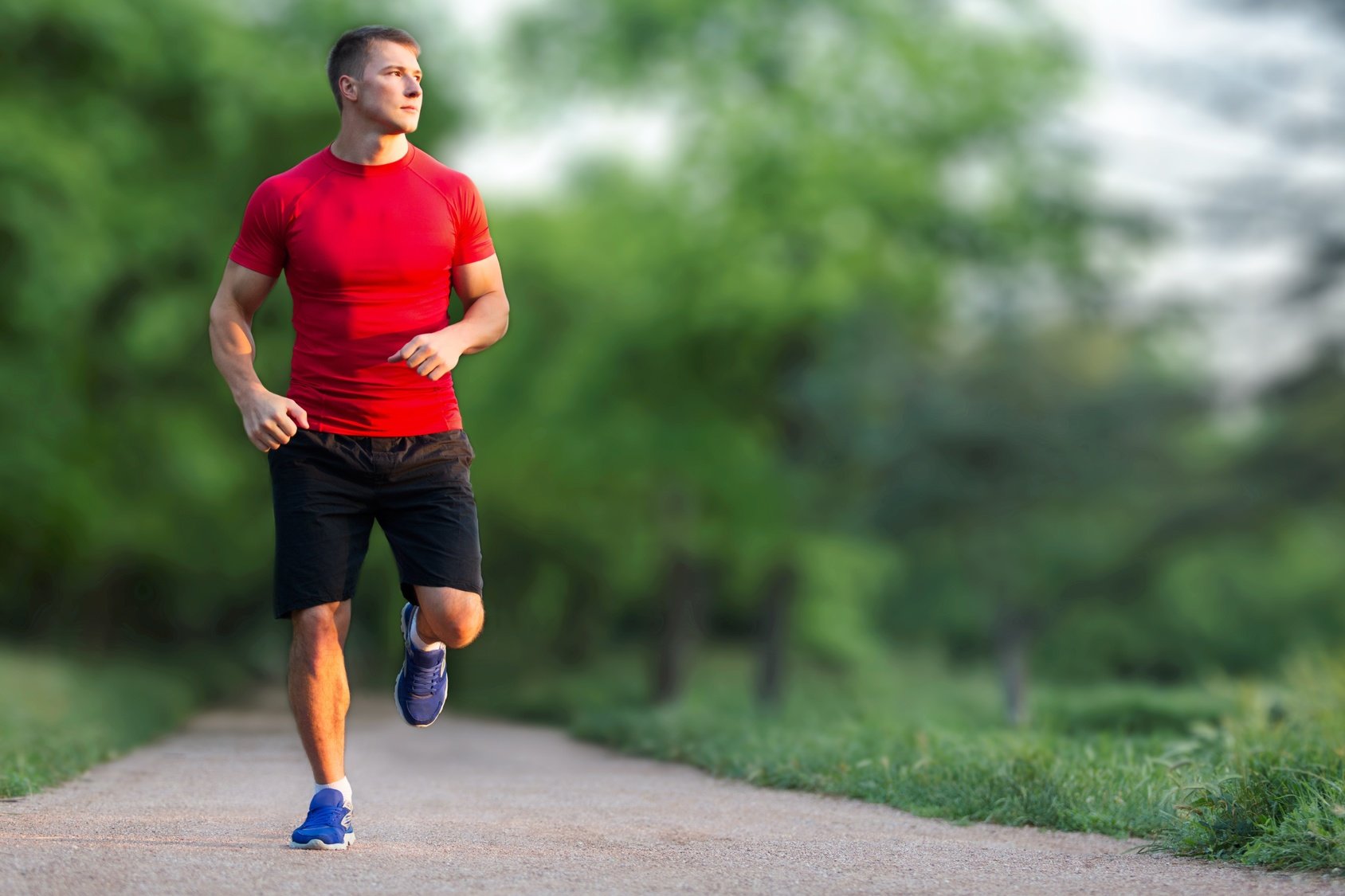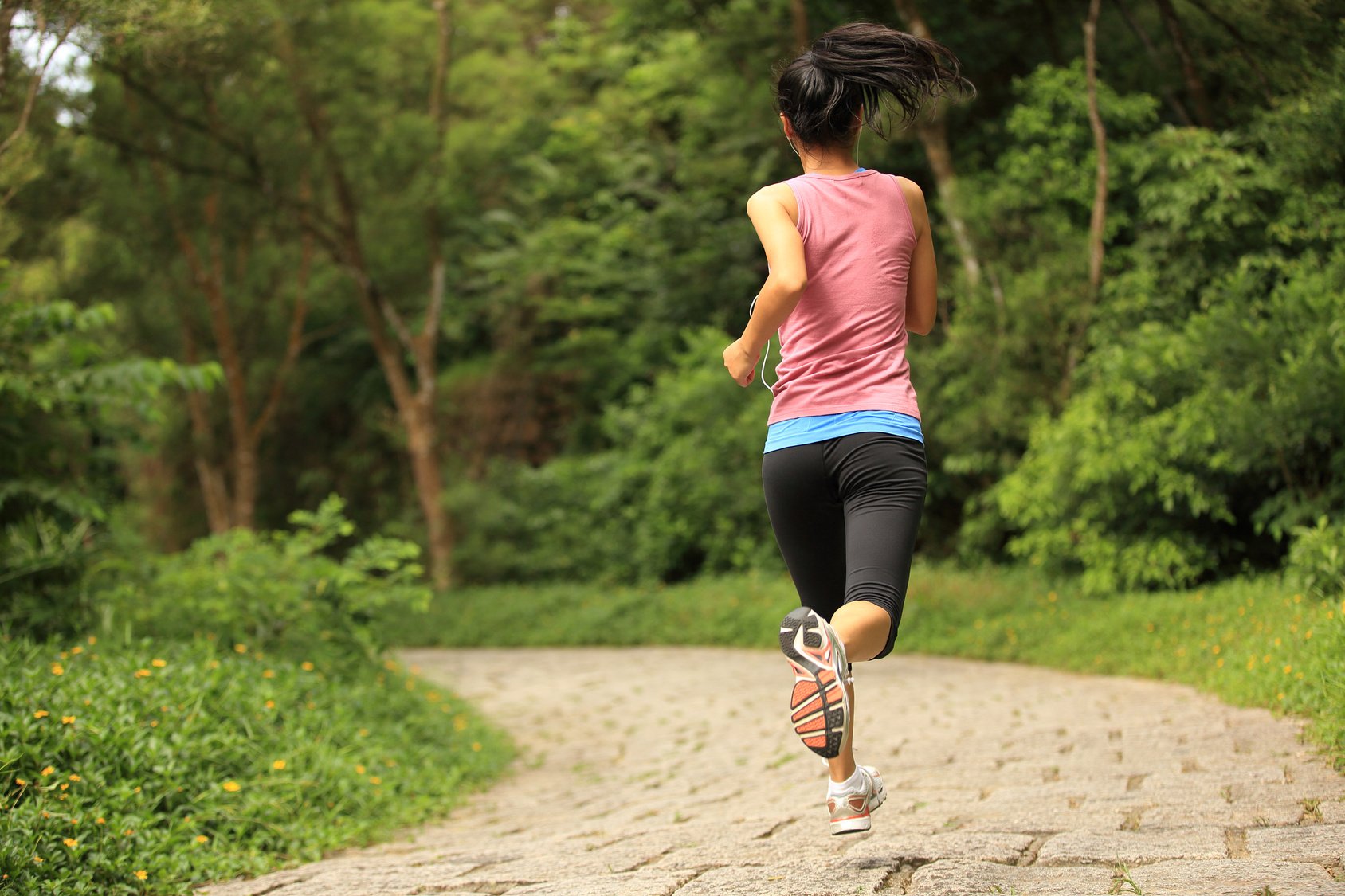If you want to improve your running speed, then interval training running is the way to go.
In fact, interval training (HIIT) has been used by athletes for years to build cardiovascular strength, power, and explosive speed.
Interval running combines short and intense bursts of exercise at maximum ability, with recovery phases, repeated throughout a single workout.
In today’s post, I’m going to share with you five of my favorite interval running workouts to build endurance and speed.
I’ll also share with you the main speed work runs you need to add to your schedule to help take your running to the next level.
The basic sessions include intervals, fartleks, tempo runs, and hill reps.
Sure, these workouts are by no means the most exhaustive list of the speedwork sessions you can do, but they’ll definitely help you on your journey to get faster.
To make these workouts efficient, step out of your comfort zone.
In other words, make sure to push yourself, challenging your body as hard as possible.
Note: Before we proceed, remember that HIIT is super challenging.
So it’s crucial to develop enough fitness (or get a green light from a certified physician) before jumping on the interval training track.
In fact, if you’re a complete beginner runner, none of your workouts should be an interval training workouts.
Instead, focus on building your base, and in a few months, you’ll have what it takes to rock HIIT.
*Disclosure: This post may contain affiliate links that at no additional cost to you. I only recommend products I’d use myself and all opinions expressed here are our own.
Interval Running Explained
Speedwork is a training methodology used by runners—and athletes from various backgrounds and fields—to increase their stride length, leg turnover, and stride efficiency, resulting in improved overall running speed and training efficiency.
More specifically, speedwork for runners consists, typically, of several running workouts of a mile or less at a race or challenging pace interceded with low to moderate recovery breaks.
These can be completed on the track (traditional sprint workouts), treadmill, or road (a steep hill is also an option).
By doing a couple of speed workouts every week, you’ll improve your running performance, shutter your race times, and have an easier time keeping up with the competition during your next race (if that’s one of your goals).
A few parameters are used to define speed work.
These include (but not limited to) intervals length, the number of reps, the speed, training pace, and how often you do them.
Classic examples of speedwork training include interval workouts, tempo runs, and fartlek sessions.
The Benefits Of Interval Running Workouts
Research shows that alternating between high-intensity intervals and recovery increases VO 2max, which boosts your body’s ability to use oxygen, leading to increased fitness capacity and improved athletic performance.
What’s more, study also shows that you might continue to burn calories at a higher rate long after you’ve finished your speed workout.
That’s what’s known as EPOC or excess post-exercise oxygen consumption.
Warming up Right
The warm-up sets the tone for your next speed workout.
A good warm-up increases your body temperature boosts blood flow to the muscles and gets you mentally ready for fast running.
So, make sure to get it right.
Otherwise, you’ll be risking, injury, premature fatigue, even burnouts.
And you don’t want that.
Here is how to warm up right:
First, walk, then jog slowly for five to 10 minutes.
Next, perform a set of dynamic mobility and stretching drills.
These include quad tugs, heel walks, butt kicks, scorpions, inchworms, lunges, and high knees. The more, the merrier.
You can also perform some of these speed drills.
Then, complete four to six strides.
These are quick accelerations, typically lasting between 20 to 30 seconds where you’re running at close to 100 percent speed.
The typical distance of striders is about 160 to 220 yards.
Recover fully between each set.
Perform these strides on flat, smooth surface.
Getting started
If you’re just starting out, then you can begin your foray into interval running with a set of six to eight 200-meter at a 5K pace or a bit faster, interceded with an easy 200-m in between each to recover.
Sample Workout
Here is how to proceed with your next (or first) interval run session:
- Start with a decent 15-minute dynamic warm-up.
- Run at interval pace—roughly 85 to 95 percent of max speed—for one minute.
- Jog for a 2-minute recovery break.
- Repeat the on and off pattern four to six times.
- Jog for five minutes to cool down, then stretch.
That’s it.
It does not get much simpler than this.
You just have to show up and do the work.
The Pace – How Fast To Perform Interval Runs
Interval training workouts are performed at 85 to 98 percent of maximum heart rate, depending on distance and trainee’s fitness level and goals.
So, for instance, short intervals are performed at a slightly faster than 5K race pace, with relatively longer recovery breaks, typically lasting two to three times as long as the repetition time.
Longer intervals are usually performed at roughly a 5K race pace, with recovery bouts of equal length or slightly less than the fast surge time.
But, all in all, as you long as you’re running faster than your goal race pace, you’re heading in the right direction.
Additional Resource – Here’s your guide to the Yasso 800 Workout
5 Interval Training Running Workouts For Speed
without further ado, here are the Interval training running sessions you need for improving your speed and overall running performance.
Interval Training Running Workout I – The Basic Interval Run
If you have never tried interval training before, start here.
The basic workout is ideal for new initiates as it helps them get their foot in the door without increasing the risk of injury or burnouts.
Interval-style runs are the most basic form of speedwork that there is. Basically, they consist of faster-paced workouts that alternate fast and slow segments for specific distances, often performed on a high school or stadium track.
A typical interval workout features two main parts.
First, they a have a fast-paced segment known as the repeat.
The repeat is run over a specific distance at a targeted pace goal speed.
The typical interval workouts consist of short repeats, lasting no more than 100 to 400 meters, or of longer distances, lasting between 800 to 2000 meters.
Then, the fast surge of effort is followed by a brief recovery.
This can be short—lasting for only 30 to 60 seconds—or of an equal time or distance to the repetition.
For example, a typical interval workout could feature five 800m reps each followed by 400m recovery breaks after each.
Or 8 400m reps with a 200m recovery jog.
Interval Running Workout II – The Fartlek Bursts
Standing for speed play in Swedish, Fartlek is a form of training that mixes steady-state running with speed intervals in an unstructured format.
The pace and distance of each acceleration, as well as the recovery, is entirely up to you.
You, basically, jog, run, or sprint for any distance or length of time, and in the order you want.
Doing so, according to most experts, strengthens both the aerobic and anaerobic energy systems—all of which can help turn you into a superb runner.
Here is the routine:
Start your Fartlek workout with a 10 to 15 minutes jog as a warm-up to ensure that your muscles are warmed enough to handle the surges.
Then play with speed by running at faster paces for short periods of time, followed by easy-effort jogging as recovery.
The best way to get on with Fartlek training is to pick out an object or landmark ahead of you, like a parked car, telephone pole, or a house, then run at a fast speed until you reach it.
Next, recover, sight the next object, etc.
So on and so forth.
Be sure to run fast enough to increase your heart rate and breathe harder, but do not push it too hard where you can no longer finish the interval or recover fully in time for the next surge.
Additional resource – How fast can Bolt Run
Interval Training Running Workout III – The Treadmill Interval Routine
Only got 25 minutes?
Then you have enough time to hop on the treadmill and try this HIIT 25-minute routine.
During this routine, you’ll not only alternate between challenging bursts of effort and lighter recovery phases but also change the incline, which pushes your body to work even harder.
Here is the routine
Step 1
Start with a 5-minute jog at a moderate pace to warm up.
Step 2
At the 5-minute mark, pick a “high-intensity speed of 9 mph (or faster) then stick to it for one minute.
Keep in mind that it will take, on average, 10 to 15 seconds for the treadmill to work up to the chosen speed.
Step 3
Recover and rest for one minute.
Step 4
Repeat Step 2 but add a 4.0 incline to mimic outdoor running conditions.
Then walk or jog for one minute to recover.
Step 5
Repeat Step 4 for five or six rounds for a total of 15 minutes, including the high-intensity bursts and recovery.
Step 6
Finish the workout with a 5-minute cool-down.
Interval Training Running Workout IV – The Hill Routine
As the name implies, hill reps are structured interval-style runs that consist of hard bursts up a hill with the down used as the recovery portion before turning and assaulting the hill again.
The Benefits
Hill running is the perfect marriage between faster-paced running and traditional strength training.
Think of hill runs are “speedwork in disguise.”
Although they don’t force you to run at top speed, they still offer many of the same perks of traditional speedwork training.
That said, hill reps are also beneficial on so many levels.
Uphill running promotes good running technique because it forces you to lift your knees, and drive your elbows back and forth to propel you forward.
These are some of the most universal traits of good form.
What goes up must come down.
The downhill repeats work your quads like nothing else and increase strength in your joints and tendons.
Also, building your power to run and downhill can increase your confidence and opens up new territories and places to train.
That’s a good thing if you ask me.
Planning your Hill Workout
When planning your hill workout, pick a hill that it’s at least 100 yards long and not too steep.
Also, make sure to find a gentle slope, preferably traffic free.
The ideal hill should take you about 30 seconds to one minute to climb at 90 percent of your maximum effort.
If you live in a relatively flat, hill-free, region, find a bridge or highway overpass with about 5 percent grade for your hill reps.
The Session
After a thorough warm-up, assault the hill at a 5K effort pace (That’s effort, not speed).
When you reach the end point of the uphill section, walk for 10 to 15 seconds, turn around, and jog slowly down to the start.
Then repeat.
Once you build more endurance, challenge yourself by increasing the length or grade of the hill, the speed of reps, or the number of intervals performed.
Keep The Form
Perform the reps with good form.
Do not lean too much forward.
Instead, focus on maintaining your balance, engaging your core, shortening your leg stride, and lift your knees a little higher than you’re used to when running on flat surfaces
Interval Running Workout V – The 100m Dashes
If you want to feel (and run) like a pro sprinter, then hit the track.
But be careful.
Do this only after interval workouts and fartleks have become a part of your routine.
Before you go full speed, warm up with a 10-minute jog, then perform six to eight strides to get your muscles fired up and ready to do some intense work.
Next, perform eight to ten 100m fast bursts.
Your first interval should include 40 meters at maximum speed.
To recover, walk or jog for half the duration of the faster interval before jumping onto the next one.
Aim for 95 to 99 percent of single max effort.
So, for instance, if your 100-m max effort is 18 seconds, then the slowest you drop to 20 seconds.
As you get used to track training, increase the volume of reps and lengthen reps to 200 meters, sprinting nearly the entire time at top speed.
Interval Running Workout VI –Tempo Runs
Also known as threshold pace running, these are workouts performed at a sustained effort over a preset time or distance.
Classic tempo runs are performed at threshold pace with the purpose of teaching your body how to maintain (comfortably hard) effort over an extended timeframe.
The Benefits
Tempo workout, when done right, can produce some immense benefits.
In fact, according to a Dutch study published in the Journal Medicine and Science in Sports & Exercise, tempo runs can improve your overall running efficiency by up to 10 percent.
That can make the difference in a tight competition.
So, why it’s the case?
Well, it’s believed that tempo training increases the anaerobic threshold levels, the point at which the body switches from aerobic system to its anaerobic system.
At this point, your body produces lactic acid faster than it can clear it.
According to conventional wisdom, lactate acid is believed to be one of the primary causes of post-workout soreness and the not-so comfortable sensations you experience when you’re engaged in intense physical exercise.
Therefore, the higher your threshold at a given pace, the longer you can maintain that given and specific pace.
The Distance
The length of your tempo runs depend, mostly, on your training level and target (race) distance,but, as general guideline, most experts recommend starting with roughly 15 to 20 minutes worth of tempo training.
Once you’ve built enough endurance and power, feel free to extend the tempo portion of your runs.
But do it slowly and gradually.
Sample Workout
After a 10 to 15 minutes slow jog warm-up, pick up your speed to a level you can maintain for the predetermined tempo segment, whether it’s distance or time.
Last up, finish the workout with a five-minute easy jog as cool down.
Do not stop on the spot as doing can lead to dizziness, even loss of consciousness—due to a phenomenon known as blood pooling.
Pace
The ideal tempo pace is roughly 80 to 90 percent of your maximum heart rate or your 10K race pace.
This may translate to about 10 to 15 seconds slower than your current 5K race pace.
The tempo run’s pace is often referred to as comfortably hard.
More specifically, this pace is hard enough to require pushing, but not too challenging to where you can no longer sustain the faster pace over the predetermined distance.
Fartleks
What might sound like a nasty intestinal disorder has nothing to do with your bowel movement.
The fact is, Fartlek is a Swedish term for speed-play—an unstructured form of speedwork in its simplest form.
More specifically, Fartlek runs are a series of faster pickups—roughly 80 to 90 percent max effort—with easy recovery intervals.
The length and speed of each interval is entirely up to you.
The Benefits
Fartlek-style workouts are ideal if you don’t have access to a track, or if you’re just starting out with speed training, and don’t know how to proceed.
What’s more, Fartlek training can also better prepare you to handle the uneven, often unpredictable, paces of a race.
As you might know, most races are typically run fast, then slow, then fast again.
These disparities of pace are often due to the race course and surges employed the competitors—usually known as rabbits in the racing circles—can quickly tire the unprepared.
So, if you’re serious about being competitive, you got to be physically and mentally prepared to handle these variations of pace.
The Sample
After the warm, up, find a target in the near distance, like a tree, a telephone pole, rock, or a house, then run harder than you ordinarily would until you reach it.
Once you reach it, slow down to catch your breath until you sight the next object.
Rinse and repeat for at least 20 to 30 minutes.
Just whatever you do, make sure to listen to your body and re-adjust your fartlek training accordingly.
You decide how fast and how long your faster-paced efforts are and how long should you take for recovery, as well as the number of surges you perform.
You’re in charge.
Pace
Your main goal is to practice running at a brisk effort (typically faster than your current 5K race pace), while keeping good form and getting your body to run anaerobically.
Interval Running Workouts – The Conclusion
There you have it. If you’re looking for some of the best interval running workouts, then today’s post has you covered. The rest is just details.
Thank you for stopping by.
Keep training strong.

